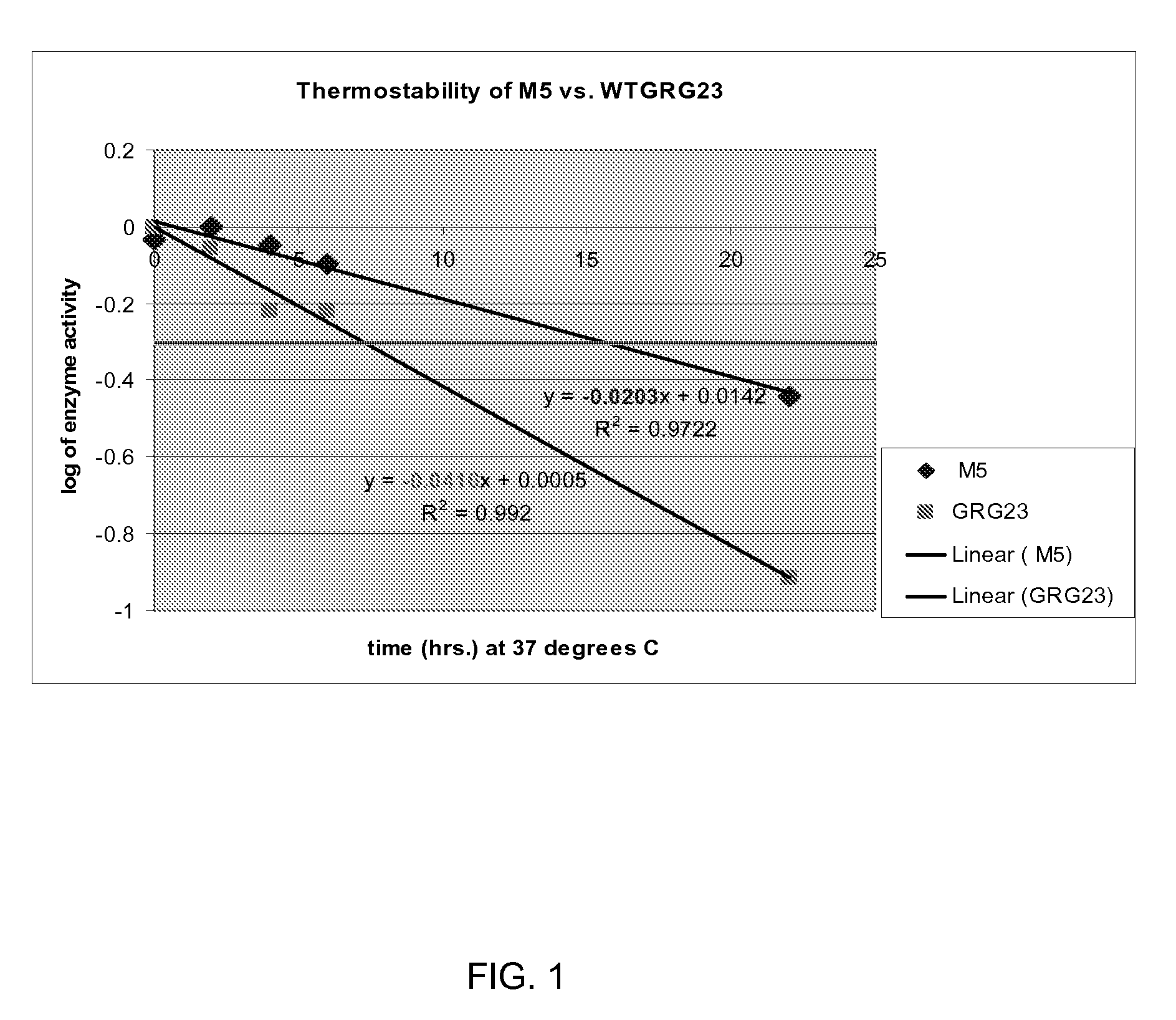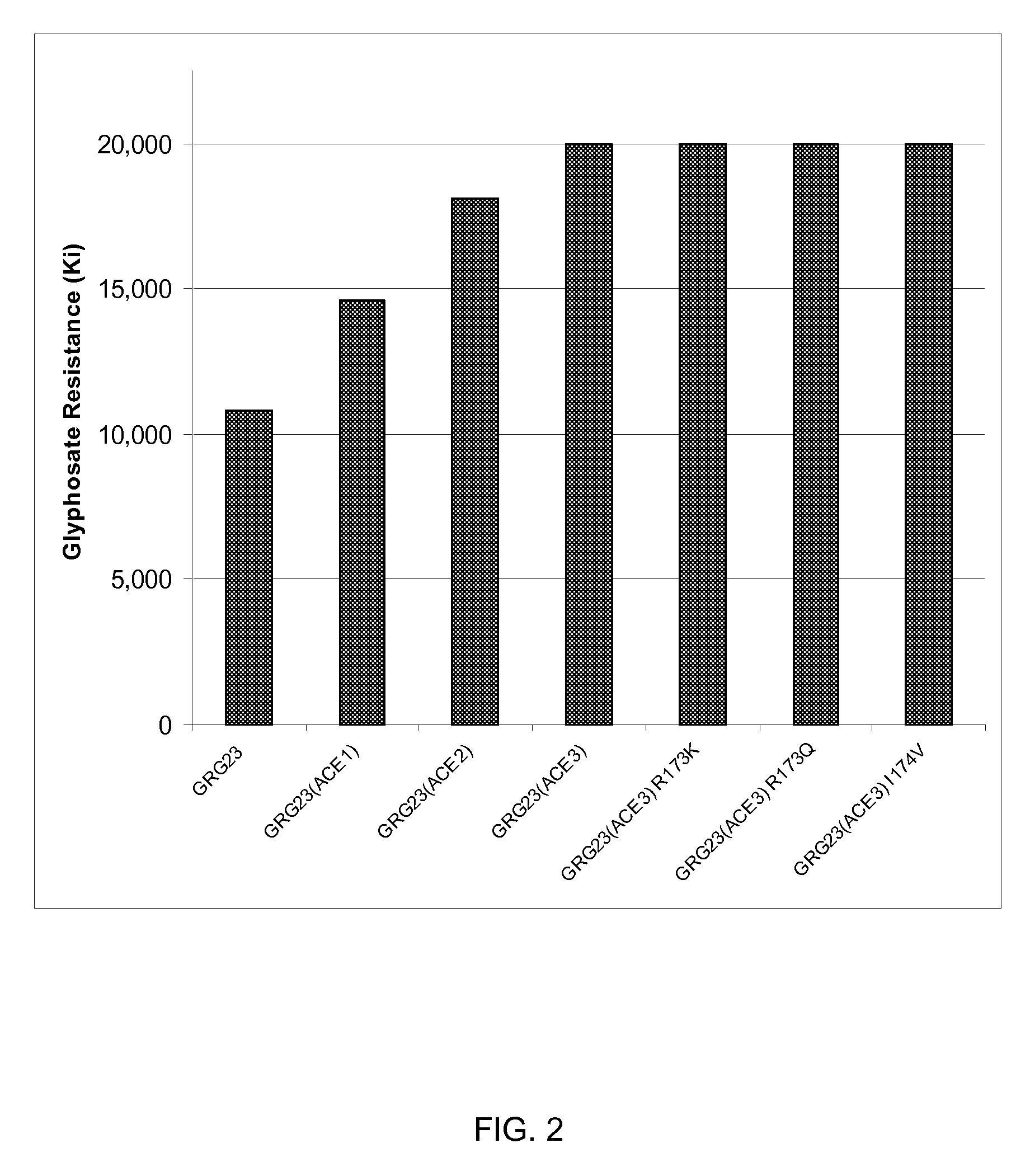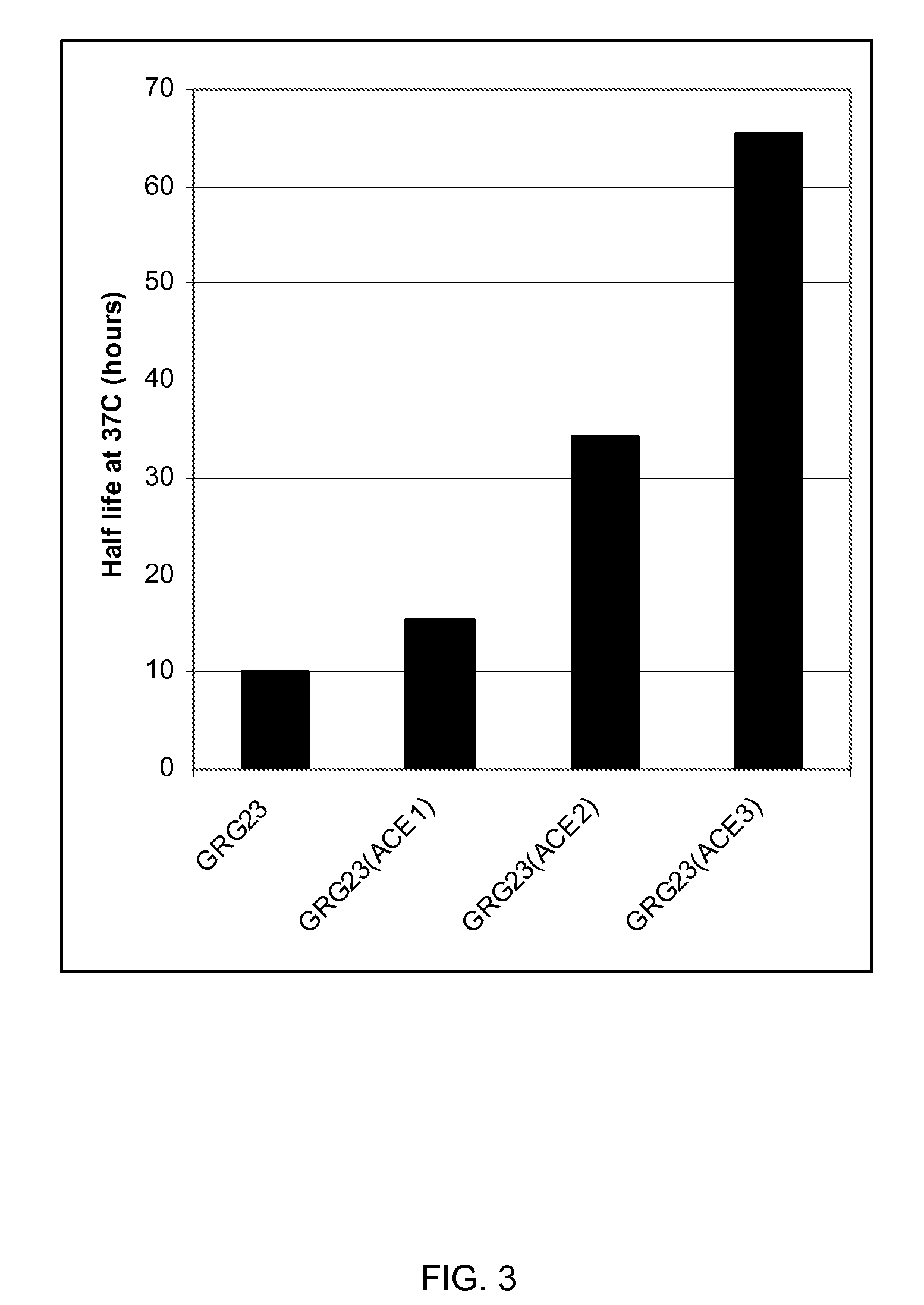Grg23 epsp synthases: compositions and methods of use
a technology of epsp and synthase, applied in the field of plant molecular biology, can solve the problems of toxic to bacterial cells, toxic to plant cells, toxic to these bacteria,
- Summary
- Abstract
- Description
- Claims
- Application Information
AI Technical Summary
Benefits of technology
Problems solved by technology
Method used
Image
Examples
example 1
syngrg23 Design and Expression
[0083]GRG23 (SEQ ID NO:2) is an EPSP synthase that possesses excellent kinetic values for Km, Ki and Vmax (U.S. Patent Application No. 60 / 741,166 filed Dec. 1, 2005). A novel gene sequence encoding the GRG23 protein (U.S. Patent Application No. 60 / 741,166 filed Dec. 1, 2005) was designed and synthesized. The resulting sequence is provided herein as SEQ ID NO:6, and is herein designated “syngrg23.” The open reading frame was cloned into the expression vector pRSF1b (Invitrogen) by methods known in the art.
[0084]The syngrg23 gene encoding GRG23 was cloned into a pUC19 vector to create pAX748. PCR primers that flanked syngrg23 in this vector were used to amplify syngrg23 from pAX748 using the Mutazyme II system (Stratagene) to introduce random mutations into the syngrg23 coding region. The template was diluted 1:50 in the error-prone PCR reaction, and amplification was carried out for 30 cycles. The resulting PCR product was digested with the restriction e...
example 2
Screening for Glyphosate Resistance on Plates
[0086]Library ligations were transformed into BL21*DE3 competent E. coli cells (Invitrogen). The transformations were performed according to the manufacturer's instructions with the following modifications. After incubation for 1 hour at 37° C. in SOC medium, the cells were sedimented by centrifugation (5 minutes, 1000×g, 4° C.). The cells were washed with 1 ml M63+, centrifuged again, and the supernatant decanted. The cells were washed a second time with 1 ml M63+ and resuspended in 200 ul M63+.
[0087]For selection of mutant GRG23 enzymes conferring glyphosate resistance in E. coli, the cells were plated onto M63+ agar medium plates containing 150 mM glyphosate, 0.05 mM IPTG (isopropyl-beta-D-thiogalactopyranoside), and 50 μg / ml kanamycin. M63+ medium contains 100 mM KH2PO4, 15 mM (NH4)2SO4, 50 μM CaCl2, 1 μM FeSO4, 50 μM MgCl2, 55 mM glucose, 25 mg / liter L-proline, 10 mg / liter thiamine HCl, sufficient NaOH to adjust the pH to 7.0, and 15...
example 3
Isolation and Analysis of Glyphosate Resistant GRG23 Variants
[0089]BL21*DE3 cells transformed with mutagenized syngrg23 and / or grg23 variants were identified by growth on glyphosate plates. Extracts of mutagenized syngrg23 and grgr23 variants were prepared and assayed for improved enzymatic activity. Colonies identified on glyphosate plates were pinned into 96-well blocks containing LB medium and were grown to an O.D. of about 0.6. IPTG was then added (0.5 mM) and the blocks were incubated overnight at 20° C. to induce protein expression. Protein extracts were prepared from the cell pellets using POP culture reagent (Novagen) and Lysonase (Novagen), and the enzymatic activity in the crude lysates was measured after heating the extracts for 30 min at 37° C. Extracts with activity greater than two standard deviations above the mean of a set of extracts containing the appropriate control protein (for example GRG23) were selected for further analysis.
[0090]Clones showing increased activ...
PUM
| Property | Measurement | Unit |
|---|---|---|
| Temperature | aaaaa | aaaaa |
| Temperature | aaaaa | aaaaa |
| Temperature | aaaaa | aaaaa |
Abstract
Description
Claims
Application Information
 Login to View More
Login to View More - R&D
- Intellectual Property
- Life Sciences
- Materials
- Tech Scout
- Unparalleled Data Quality
- Higher Quality Content
- 60% Fewer Hallucinations
Browse by: Latest US Patents, China's latest patents, Technical Efficacy Thesaurus, Application Domain, Technology Topic, Popular Technical Reports.
© 2025 PatSnap. All rights reserved.Legal|Privacy policy|Modern Slavery Act Transparency Statement|Sitemap|About US| Contact US: help@patsnap.com



